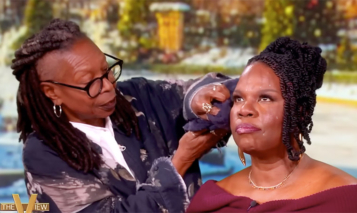Podiatrists have issued warnings about women wearing high heeled shoes for decades. The high fashion footwear are available in a variety of styles including stilleto’s (or spikes), pumps and wedges. Originally designed to keep a horseback rider’s feet from slipping out of the stirrups, high-heeled shoes have evolved into medieval torture devices.
Doctors say pointy pumps (such as those pictured above on a local celebrity) are the worst culprits. The pointy toes squeeze the entire front of your foot together, causing nerve pain, bunions, blisters, and hammertoes.
European royalty began wearing expensive, custom made high-heeled shoes to make them seem taller than they were. Since only royalty and the well-to-do could afford to wear such heels in the 16th century, people of wealth were often referred to as “well-heeled”.
Today’s well-heeled celebrities and thousandaires distinguish themselves from the common folk by wearing pricey ultra high-heeled shoes (with 4+ inch heels) designed by Christian Louboutin, Valentino, Manolo Blahnik, Jimmy Choo, Prada, St. Laurant, and others.
Podiatrists blame ultra high heels on a number of medical maladies including chronic back pain, knee pain, foot and tendon pain, blisters, degenerative joint disease, swelling of the feet and ankles, etc.
“Heels are getting higher and higher,” says Hillary Brenner, DPM. “We podiatrists like to call it shoe-icide.”
Ultra high heels force the feet into an unnatural position that puts pressure on the ball of the foot.
The long bones of the toes (metatarsals) are forced into the pea-shaped sesamoid bones and the small toe bones, causing inflammation and hairline fractures that often go untreated. These bones heal incorrectly, throwing the toes out of alignment and causing chronic pain.

Doctors say high-heeled shoes are responsible for a unique condition called a “pump bump,” a painful knot on the back of women’s heels.
The pressure from high-heeled shoes can lead to painful bursitis, blisters, ankle sprains, ligament tears, toe deformities, calluses, and pain in the Achilles tendon. Women even develop blisters under their toe nails from the pressure.

Stilettos are particularly dangerous. “The weight is pinpointed on one area,” Brenner tells WebMD. “That makes you wobble like you’re walking on stilts.”

Dr. Brenner says platform shoes “throws off the biomechanics of walking.” She adds: “Your foot is trying to bend a certain way, but the shoe is fighting you because it’s so rigid.”

Bunions are another condition unique to pointy toed high-heeled shoes. According to WebMD, bunions are formed after years of abnormal pressure and restrictive movement of the foot. Which explains why bunions affect mostly women and transponders.
The lower the heel, the more natural position your foot will be in. Heels should be no more than 2 inches high — for women and men.
This has been your Medical Minute.
More Info On the Web
Tip to Avoid Foot Pain from High Heels – WebMD
The Worst Shoes for Your Feet – WebMD
The Real Harm in High Heels – Osteopathic.org
Arthritis, Foot Pain & Show Wear – NIH
DISCLAIMER
Any medical information published on this blog is for your general information only and is not intended as a substitute for informed medical advice. You should not take any action before consulting with your personal physician or a health care provider. Sandrarose.com and its affiliates cannot be held liable for any damages incurred by following advice found on this blog.






